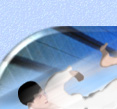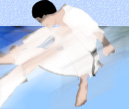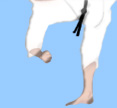|
||||||||||||
|
I am writing this article to hopefully shed some light on the reason why Rama recommended so many of his students take up Martial Arts of some kind or another. This piece is dedicated to the form of Karate known as Shotokan. First of all I think it would be appropriate to give you a little background history on myself. I have trained in traditional Shotokan Karate for over 18 years and hold a Third Degree Black Belt. I have been fortunate enough to have studied for ten of those years directly under one of the most famous Masters of this style and a direct student of the founder Gichin Funakoshi (1868-1957). My hope is to show how the Martial Arts, in general, as well as the style I practice, is related to the arts of Meditation and Self-Discovery and to do this I must give you a brief history on the origins of Karate. This ancient fighting art has survived through four cultures: India, China, Okinawa and Japan. It dates back about fourteen hundred years to Bodhidharma (one of the founders of Zen Buddhism). It is believed that Bodhidharma was born in South India and was the third son of a King. He became a disciple of Prajnadhara, the twenty-seventh Indian Patriarch and was chosen by Prajnadhara to be his successor and asked to go to China to teach. Since the roads at that time between India and China were not that good it was extremely difficult penetrating mountain ranges such as the Himalayas and crossing rivers through complete wilderness. Bodhidharma, because of this, developed great spiritual and physical strength. Later when he taught monks at the Shaolin Temple in Northern China, his spiritual teaching methods were so difficult and demanding that many of his disciples could not stand the hardships and dropped in exhaustion, unable to stay awake for meditation. Bodhidharma having learned the Indian Vajramshti fighting system as a youth, taught the monks, and as a result they were able to recover their spiritual and physical strength. Shortly after this the monastery was visited by a group of emperors and generals who would go there to offer prayers and perform rites for peace and prosperity of the people. Some of these generals eventually retired to the monastery. They then, of course, encountered the monks performing Bodhidharma's exercises and became very interested in them from a Martial Arts point of view. These external exercises, it is said, evolved into KungFu and the internal exercises developed into Chi Kung. The Kung Fu or Shaolin Boxing over the course of time developed into numerous independent schools. These teachings eventually spread to the Ryukyu Islands, including Okinawa, the main island of the chain. Okinawa's unique geographical position, as well as the two periods in its history when the use of weapons were forbidden, are the major reasons for the high degree of development of the Martial Art known as Karate and the most complete transmission of the ancient teachings of Bodhidharma. The Shaolin monastery still exists today. There are monks there too. Unfortunately, however, it is nothing more than a tourist attraction, and the monks are not highly regarded. But the original founder Bodhiddharma stressed meditation as the way to achieve enlightenment. The essence of his Buddhist Zen can be summed up in these lines:
Rama called this Old Zen and at times he would talk about how the Buddha's original teachings were rediscovered by Bodhidharma and others of that time period. My Sensei's teacher, Master Gichin Funakoshi studied secretly with two of Okinawa's top Masters of that time: Masters Azato and Itosu. Funakoshi was later asked to give a Karate demonstration by the Ministry of Education in Japan in the Spring of 1922, and travelled to Tokyo to introduce Karate to the Japanese people. The founder of Kodokan Judo, Jogoro Kano, was at that demonstration and was so impressed that he invited Funakoshi to stay and teach Karate at the Kodokan Judo Hall. Master Funakoshi's Karate - later called Shotokan Karate - was virtually unknown and he had very few students at the beginning. Following the U.S. Occupation of Japan at the close of World War II, the U.S. military command in Japan, under General Douglas MacArthur, considered the practice of Judo and Kendo overly militant and it was strictly forbidden. However, Karate in Japan was relatively obscure and escaped the prohibition and so Karate flourished. Master Funakoshi is also given credit for changing the Chinese characters for the Okinawan art called Okinawa-te-to: "Kara" meaning Empty and "te" meaning Hand - therefore renaming the art "Karate, Way of the Empty Hand." Today some eight million people in sixty-seven countries around the world practice this Martial Art known as Shotokan Karate and it is probably the most popular style of Karate, second only to Tae Kwon Do. I know personally that Rama had probably more Shotokan Karate students than any other style of Karate from JKA, ISKF and SKA organizations. He made financial contributions to many of these different groups. I am sure because of the history of this Martial Art with an unbroken line going directly back to Bodhidharma's Zen Buddhism, Rama had a special appreciation for this style of Karate. We are taught that the real opponent we are trying to face is ourselves. We are also taught to strive to reach a state of mind called "Mushin" (Detached Mind or No Mind) in our practice so we can see "Ken Zen Itchi" (The First and Zen are the Same.) We are taught that techniques will occur when the void is found and I personally have had this experience! I remember once facing an opponent at the end of a three hour practice. We were all dead tired and in the next moment I was facing someone that in the past I had been afraid of - but I was so tired that I was not scared. In fact, I remember in that moment not caring if I lived or died. Suddenly I experienced a feeling I can't describe - it was as if time had stopped. First, it was like time somehow had slowed down. Just like in a slow motion movie. I had plenty of time to react and in that same moment I saw myself hitting my opponent with a beautifully executed reverse punch to the solar plexus and the next thing I knew I had already punched him. It was an incredible feeling of oneness and it made all the years of hard and difficult training seem worthwhile. I was very, very happy maybe for the first time in my life, because somehow I felt whole. Years later, at a seminar in New York, in the early 90's with Rama, I remember during a meditation my back locking up straight - so straight that I could not move. I had been studying with him for only three years and my concentration was just beginning to be really serious. I could stop my thoughts completely for about five to ten minutes at a time and it felt like I had stopped breathing. It was like I was breathing through my skin. Then all of a sudden I remember the music stopped or maybe I did. I was in a world I cannot begin to describe. The eternal winds were blowing down an endless vacuum of stillness. Such Joy, such Ecstasy, such Bliss - the outer world can only imagine. This was the same moment I had experienced years before during that Karate match. This was Rama's real gift to us all. Anyone who ever had the rare opportunity to have sat with him for any length of time knows what I'm talking about. So if you're one of those students that has never studied Martial Arts I am writing this for you, so you can understand and see the connection between the two. One mental, and the other physical. Together they truly are a great combination for obtaining Enlightenment. Good Luck! Ian |
|||||||
|
|||||||
|
|||||||








